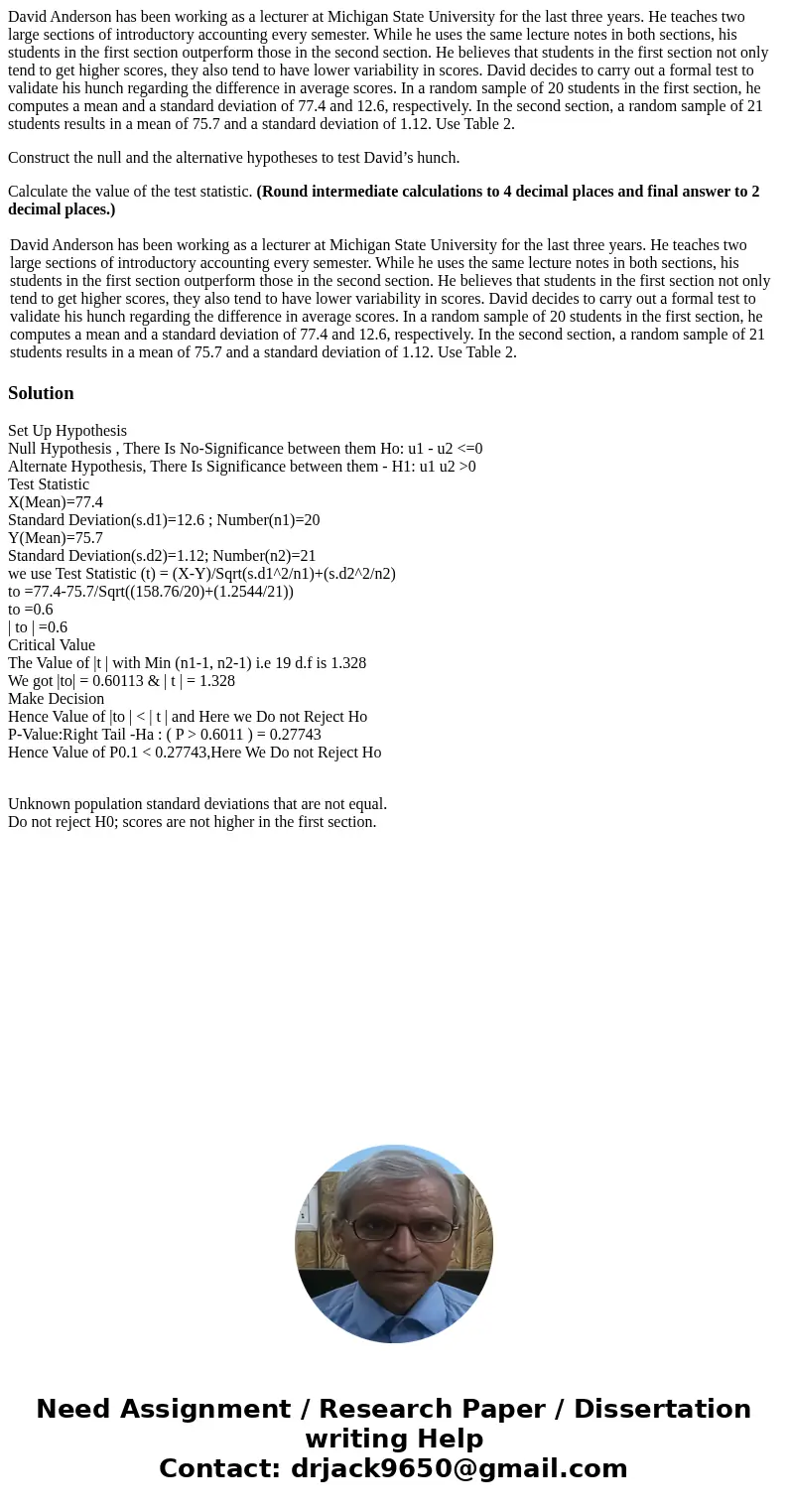David Anderson has been working as a lecturer at Michigan St
David Anderson has been working as a lecturer at Michigan State University for the last three years. He teaches two large sections of introductory accounting every semester. While he uses the same lecture notes in both sections, his students in the first section outperform those in the second section. He believes that students in the first section not only tend to get higher scores, they also tend to have lower variability in scores. David decides to carry out a formal test to validate his hunch regarding the difference in average scores. In a random sample of 20 students in the first section, he computes a mean and a standard deviation of 77.4 and 12.6, respectively. In the second section, a random sample of 21 students results in a mean of 75.7 and a standard deviation of 1.12. Use Table 2.
Construct the null and the alternative hypotheses to test David’s hunch.
Calculate the value of the test statistic. (Round intermediate calculations to 4 decimal places and final answer to 2 decimal places.)
| David Anderson has been working as a lecturer at Michigan State University for the last three years. He teaches two large sections of introductory accounting every semester. While he uses the same lecture notes in both sections, his students in the first section outperform those in the second section. He believes that students in the first section not only tend to get higher scores, they also tend to have lower variability in scores. David decides to carry out a formal test to validate his hunch regarding the difference in average scores. In a random sample of 20 students in the first section, he computes a mean and a standard deviation of 77.4 and 12.6, respectively. In the second section, a random sample of 21 students results in a mean of 75.7 and a standard deviation of 1.12. Use Table 2. |
Solution
Set Up Hypothesis
Null Hypothesis , There Is No-Significance between them Ho: u1 - u2 <=0
Alternate Hypothesis, There Is Significance between them - H1: u1 u2 >0
Test Statistic
X(Mean)=77.4
Standard Deviation(s.d1)=12.6 ; Number(n1)=20
Y(Mean)=75.7
Standard Deviation(s.d2)=1.12; Number(n2)=21
we use Test Statistic (t) = (X-Y)/Sqrt(s.d1^2/n1)+(s.d2^2/n2)
to =77.4-75.7/Sqrt((158.76/20)+(1.2544/21))
to =0.6
| to | =0.6
Critical Value
The Value of |t | with Min (n1-1, n2-1) i.e 19 d.f is 1.328
We got |to| = 0.60113 & | t | = 1.328
Make Decision
Hence Value of |to | < | t | and Here we Do not Reject Ho
P-Value:Right Tail -Ha : ( P > 0.6011 ) = 0.27743
Hence Value of P0.1 < 0.27743,Here We Do not Reject Ho
Unknown population standard deviations that are not equal.
Do not reject H0; scores are not higher in the first section.

 Homework Sourse
Homework Sourse